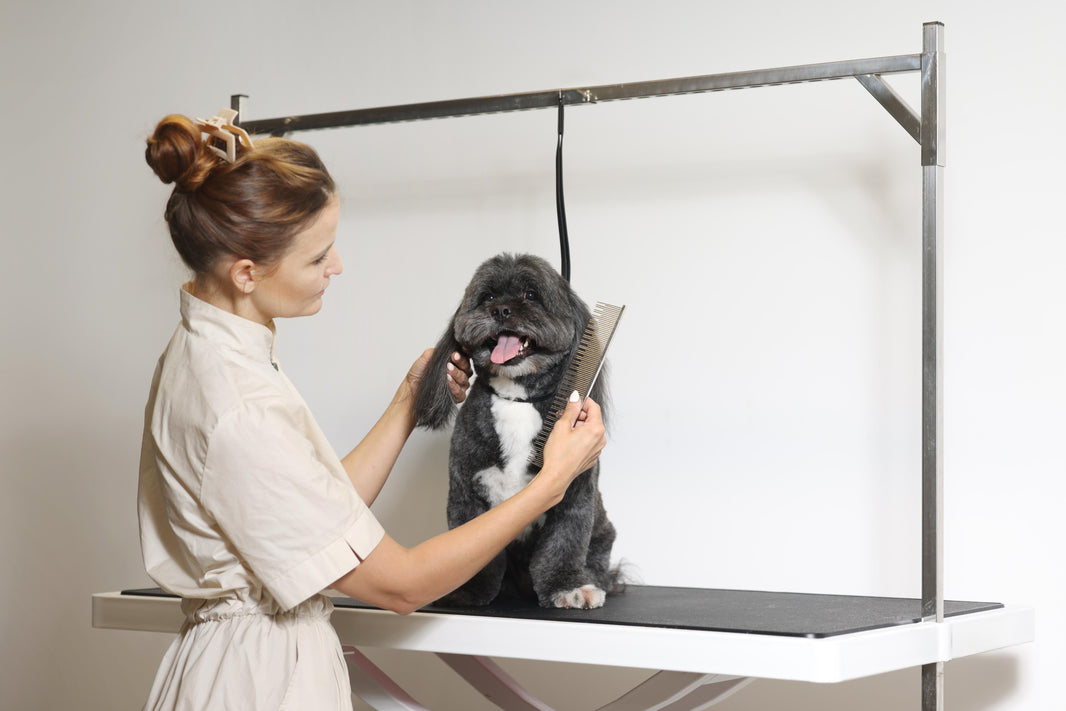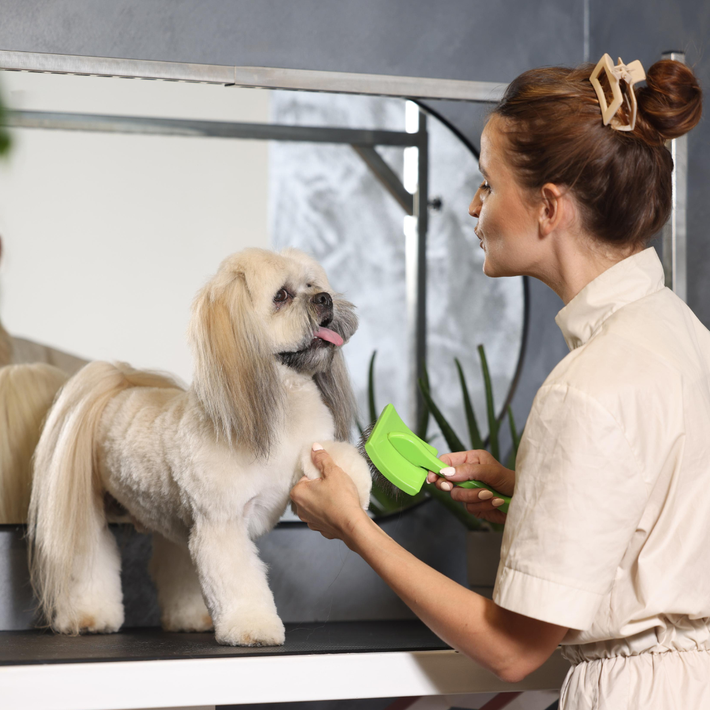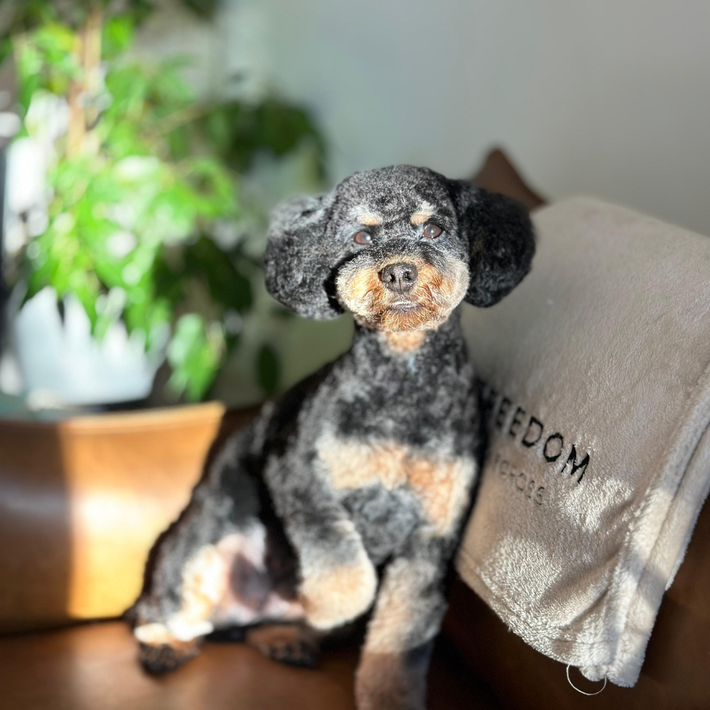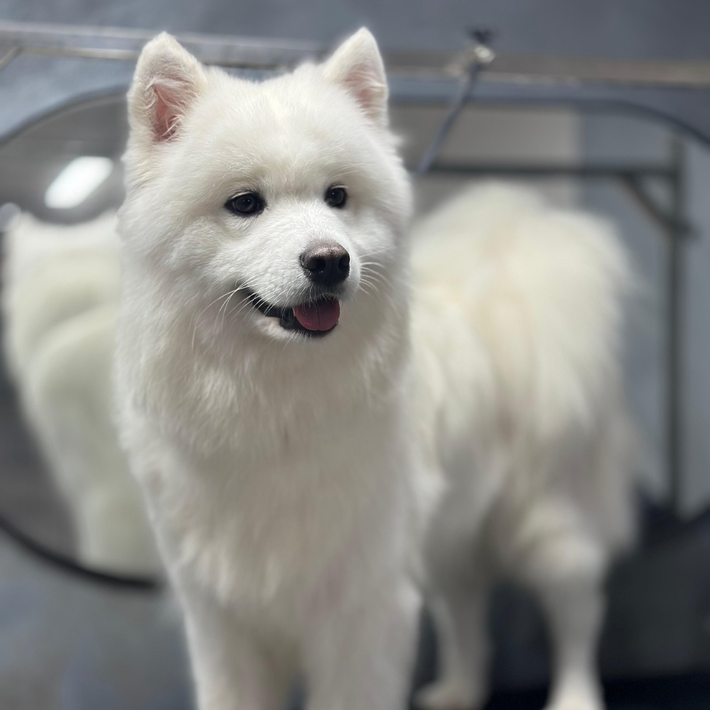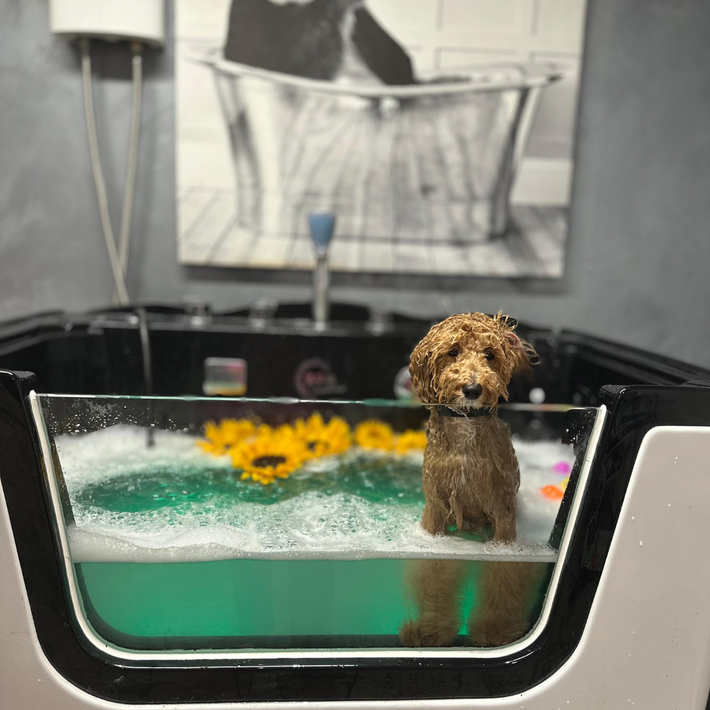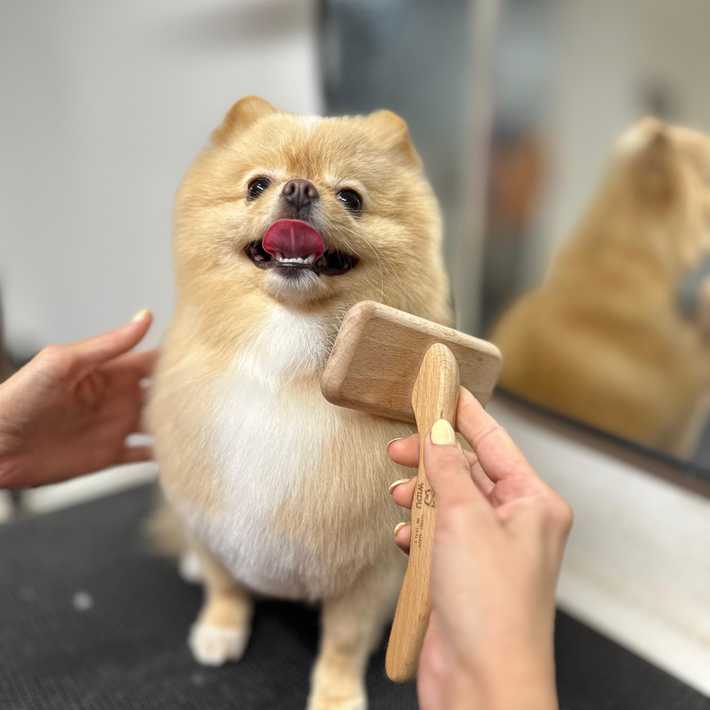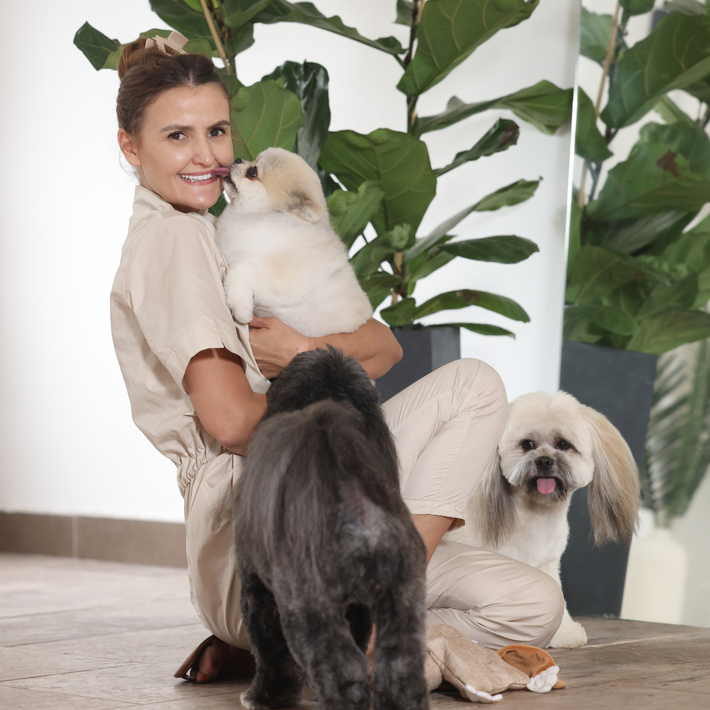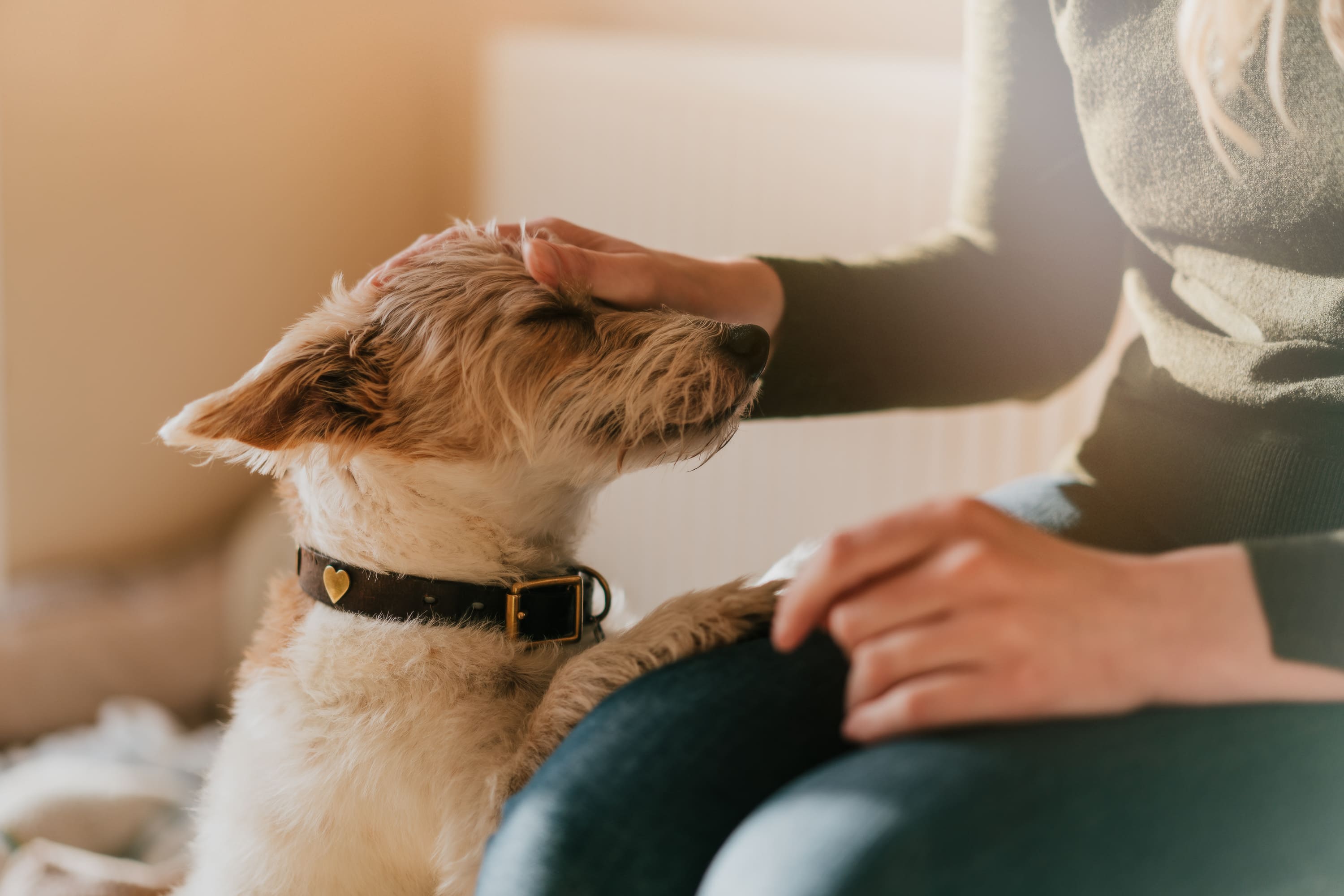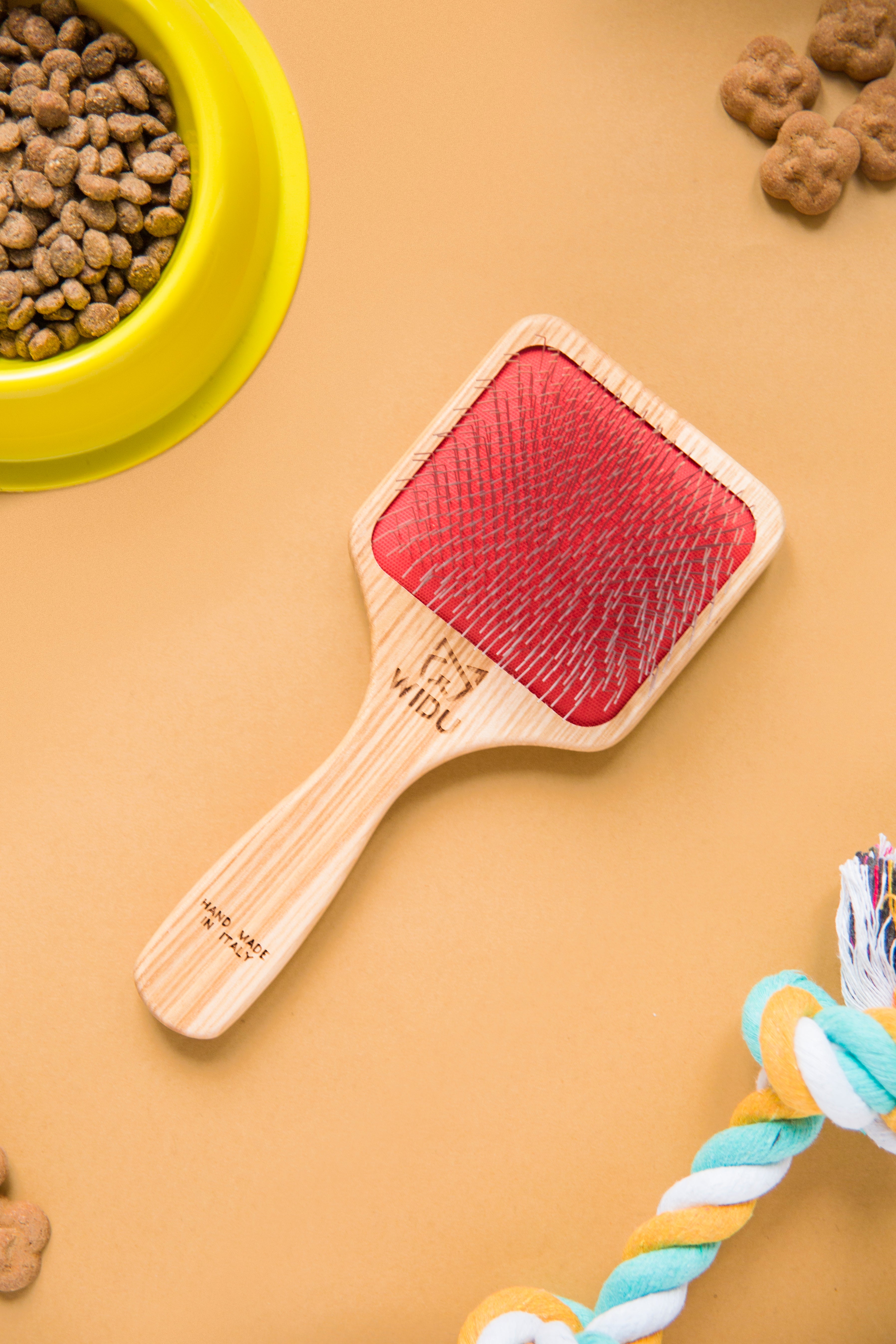Dog Dental Care at Home: Preventing Tartar Without Stress
Keeping your dog’s teeth clean is not just a cosmetic issue; but it has a real impact on their welfare too. As a vet, I diagnose varying degrees of dental disease on a daily basis. In fact, some studies suggest that 1 in 8 dogs is affected by dental disease, with some breeds more at risk than others.
So, what should you be doing to care for your dogs’ teeth at home, and why? Read on to find out more.
Why is dental care important for dogs?
Routine dental care in dogs is important for many reasons –
-
Helps prevent dental disease – painful gum inflammation, tooth loosening, and tooth loss can occur if your dog develops periodontal disease.
-
Protects organ health – bacteria can spread through the blood via inflamed gums, affecting organs like the kidneys, liver, and heart.
-
Ensures good quality of life – painful teeth seriously impact our pet’s wellbeing, affecting their mood, ability to play, and appetite
-
Reduces halitosis – keeping on top of bacteria and food debris helps to maintain fresh breath
-
Reduces the risk of medical interventions – keeping your pet’s teeth in good health, you will reduce the risk of them requiring invasive veterinary treatment, such as surgical extractions.
Dog dental care at home
There are a few things you can do at home to take care of your dog’s teeth –
Daily teeth brushing
Daily teeth brushing is the number one thing you can do to look after your dog’s oral hygiene. Training should begin in puppyhood, but it’s never too late in life to start.
Slowly work your way through the following steps, remembering to praise and reward your pet each time. Different dogs will take different amounts of time to become comfortable with each part of the process, so don’t rush.
-
Start by touching your dog’s face. Stroke around their face and mouth, gently lifting a lip briefly. Reward your pet for this. Once comfortable you can move to the next step.
-
Lift their top lip and slide your finger over their teeth. Start with just the upper canine (large fang) tooth and gradually progress to other teeth over a period of several days, until your dog allows you to touch all their teeth.
-
Once your pet is comfortable with having their mouth handled, try massaging their gums with your finger. You can use a finger-style toothbrush and some pet-safe toothpaste at this stage. Your pet may want to sniff and lick at the paste first.
-
Next, introduce a toothbrush with bristles. You can purchase ones specifically for pets or use a child’s toothbrush. You may need to take things steady until your dog gets used to the feel of the toothbrush, touching one tooth at a time.
-
Try to ensure you brush your dog’s teeth daily, remembering to praise and reward them each time to keep the experience positive.
Training your dog to accept toothbrushing can be a very gradual process. Keep training sessions short and go back a step or two if your dog is not comfortable. The slower and more patient you are, the better your chances of success.
Dental diets and treats
Many owners ask how they can clean their dog’s teeth naturally. While nothing will take the place of regular teeth brushing, some dental chews have been proven to improve oral hygiene. There are diets formulated specifically to help prevent tartar buildup up too.
Bones, antlers, and other hard chew items should be avoided as they can cause painful dental fractures. Don’t give your dog anything that is too hard to dent with a fingernail.
Chew toys
Chew toys can help to massage gums and reduce plaque and tartar build up. Chewing has been proven to have a positive impact on the oral microbiome. Again, just make sure not to give your pet anything too hard and check toys regularly for wear and tear.
Water additives and supplements
Water additives and other supplements are available which can help to maintain oral health in dogs. These can be a useful aid alongside other measures like tooth brushing. Speak to your vet for advice on their recommended products.
Attend regular vet checkups
Whilst strictly speaking not a form of home care, we couldn’t miss out vet checkups. Attending regular appointments with your vet allows problems to be spotted earlier. It also gives you an opportunity to discuss your pet’s oral hygiene routine. Your vet may suggest a professional clean and examination under anaesthetic to help improve things.
Summary
Preventing tartar needn’t be stressful! Gradually introducing your dog to daily teeth brushing is the best way to look after their oral hygiene. Taking things slowly is key. Plus, don’t forget, other products like dental chews and supplements can be helpful aids alongside teeth brushing.
Always speak to your vet if you have concerns about your dog’s dental health or you are struggling with their oral care at home.



